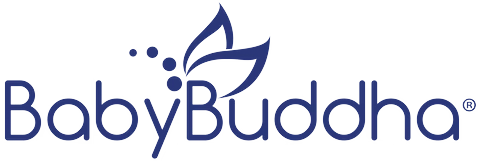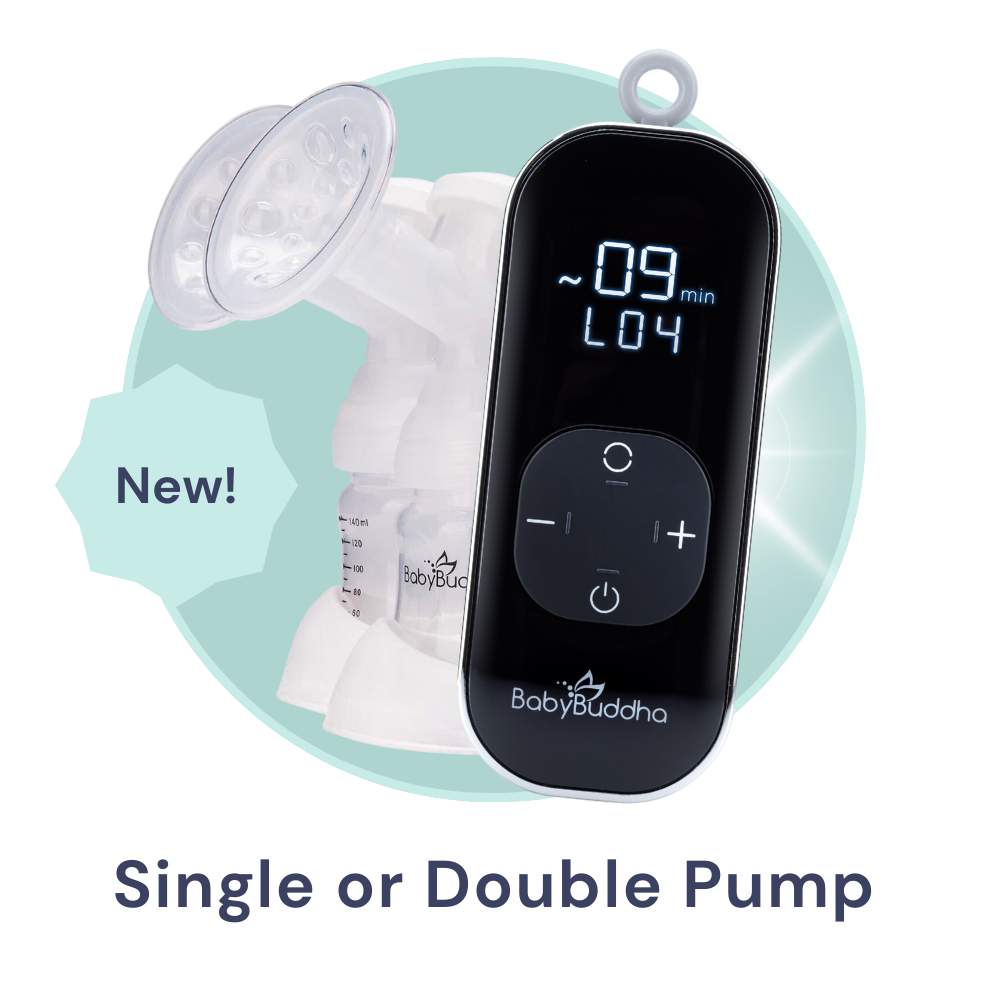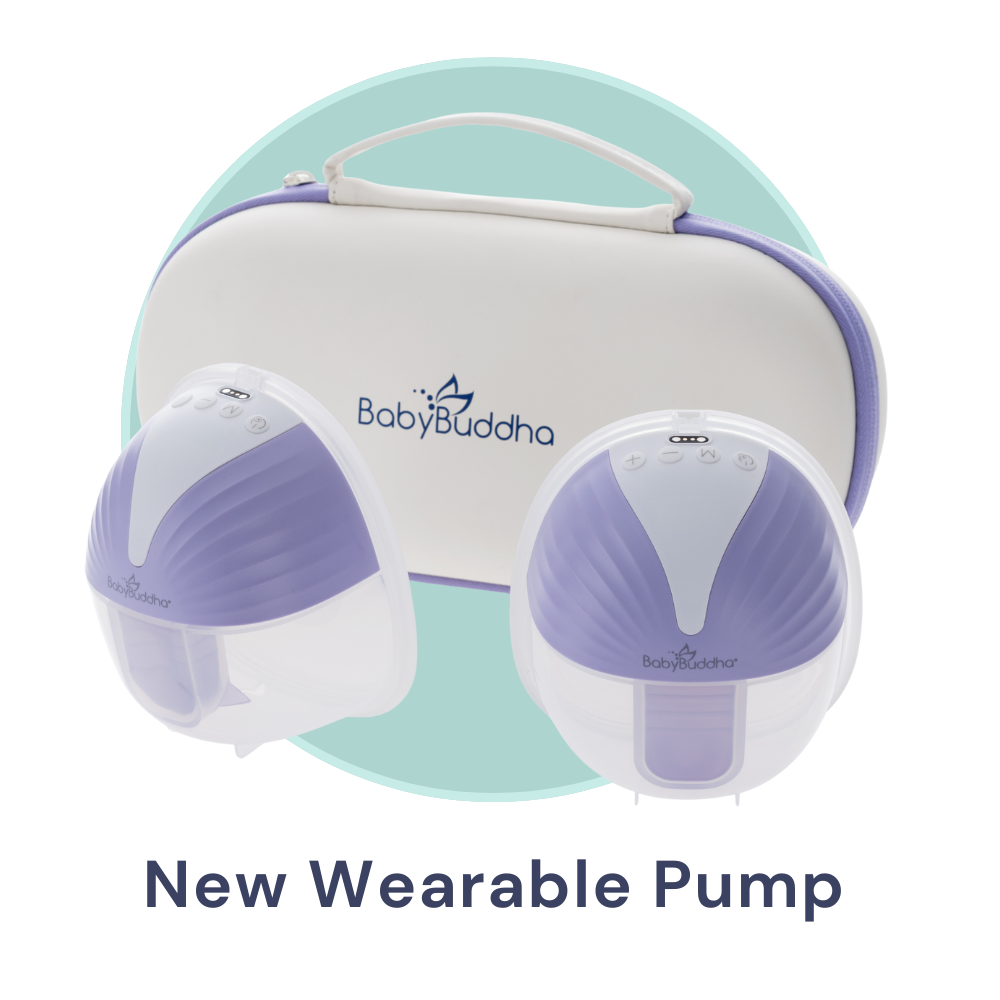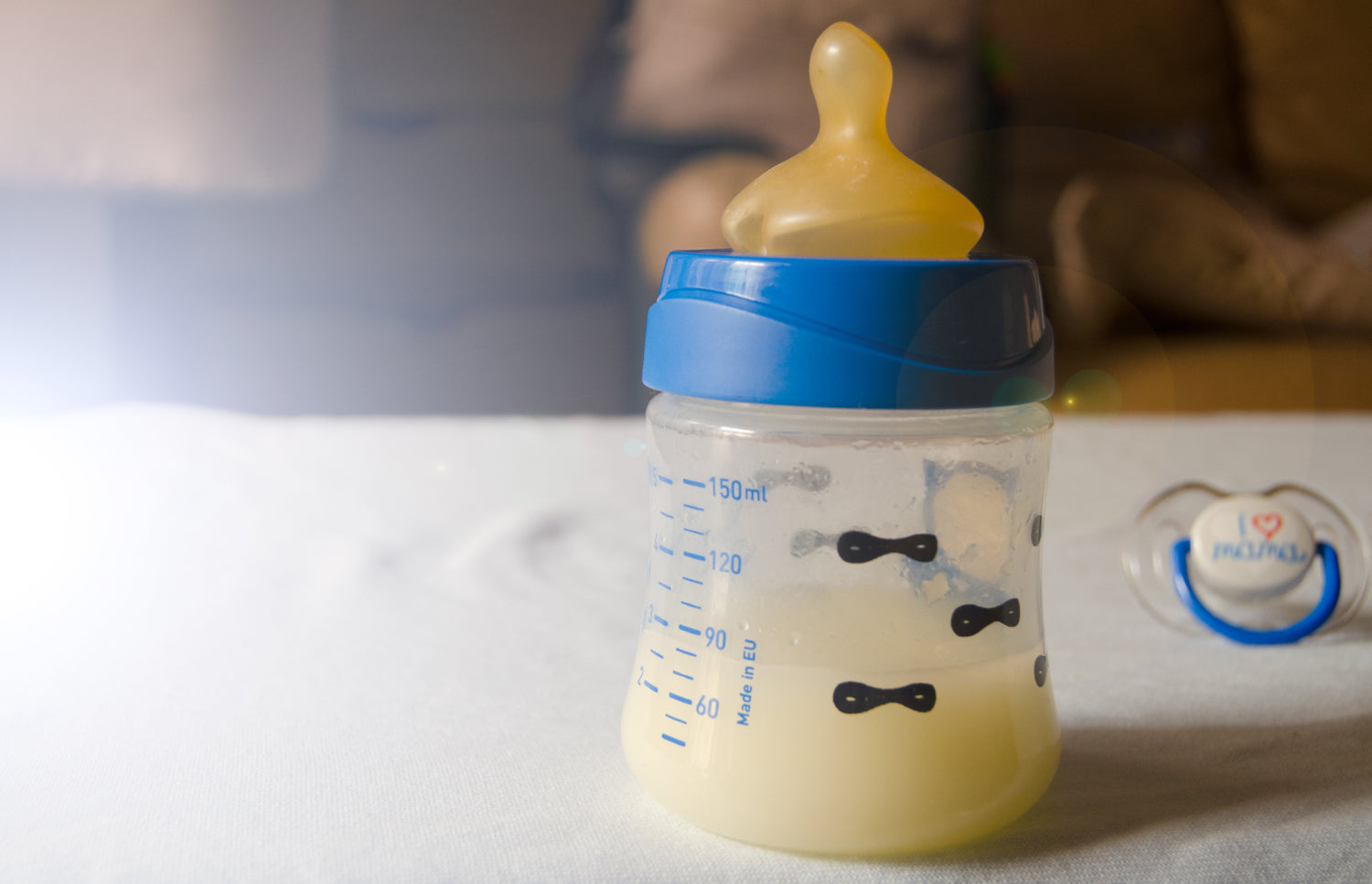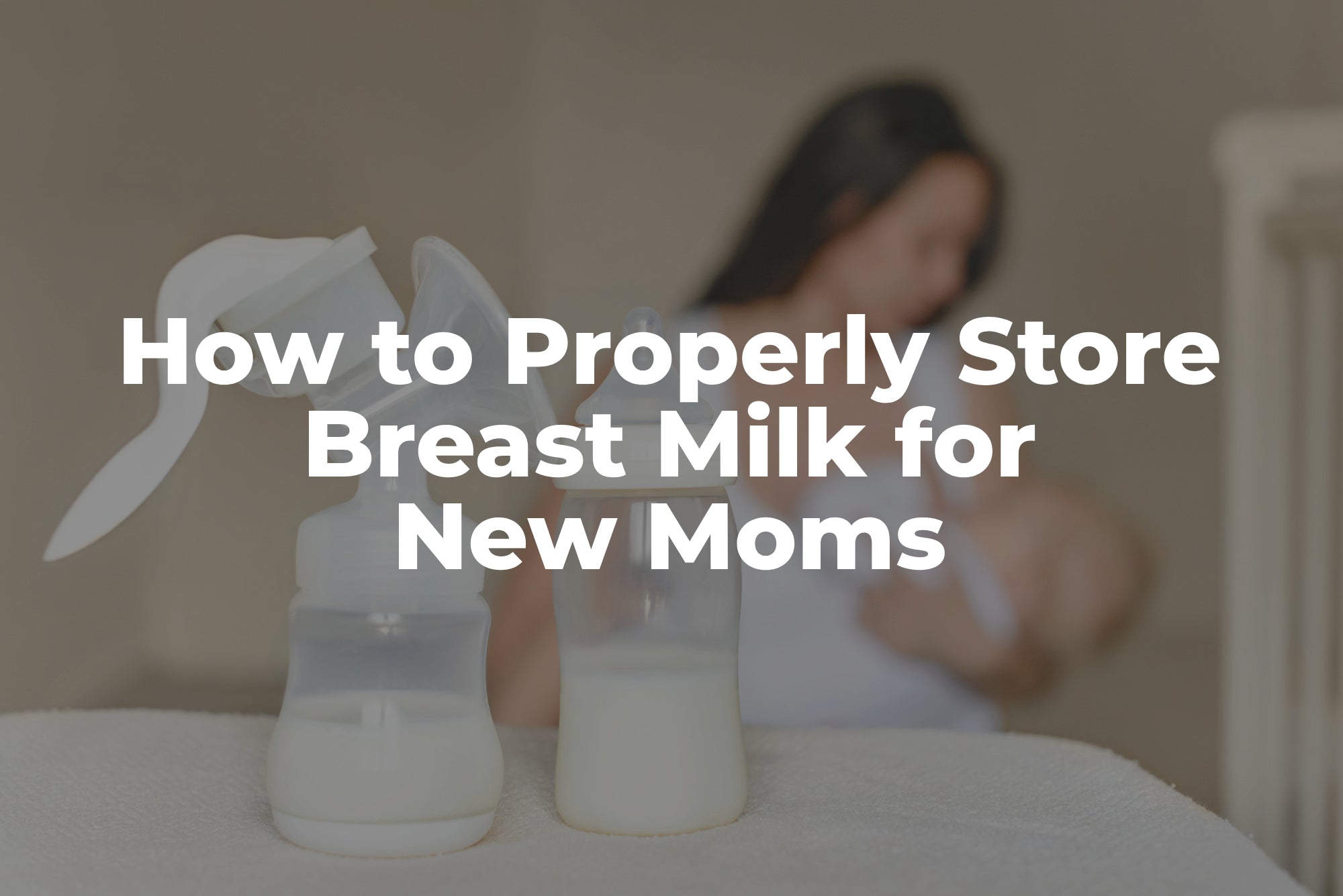There are a lot of things that new moms and seasoned moms alike have to consider during the weeks and months after they welcome a little one into the world. One of these large points is, “How much should my baby be eating?”
Many factors determine the answer to this commonly asked question. Breastfeeding and pumping are not one size fits all situations. Every woman is different, and every baby is different, meaning that every feeding journey will be unique.
With that said, let’s start the discussion surrounding how much milk to pump and when. There are several things to consider when trying to answer this question:
What Is Your Pumping Method?

There are two main methods for pumping: exclusively pumping and pumping as needed. Which of these methods you decide on will affect how much and how often you pump.
Exclusively pumping means that you are not bringing your baby to your breast, but they are still eating breast milk exclusively. You pump your breast milk via a pump or hand expression and then feed it to your baby in a bottle.
Pumping as needed or supplementary pumping means that you are primarily breastfeeding but will have a pumping session after you nurse to ensure your breasts are empty. This can also look like pumping when you are at work or otherwise away from your baby, but when you are with them, you offer your breast as their main form of feeding.
Regardless of which of these types of pumping you choose, it is important to create a pumping schedule that works well for you and your baby.
Timeline of Milk Production
Breast milk is produced in three different stages. With these breast milk stages, production will be affected (which is to be expected).
Here are the stages of breast milk and how long each phase takes:
- Colostrum: The first phase of breast milk is colostrum. This thick, yellow milk is the first milk your breasts will create. It is extremely nutrient dense and high in protein to give your baby everything they need immediately after they are born. This first phase lasts from when your baby is born to about three to five days postpartum, depending on the woman.
- Transitional Milk: The second phase of breast milk production is called transitional milk. This is when your milk “comes in” and flows more freely. This is still a mix of colostrum and your more mature breast milk, and this phase lasts for about two weeks after you stop producing solely colostrum.
- Mature Milk: This is the final stage of breast milk production and will last for as long as you are breastfeeding or pumping. This milk is more of a typical milk consistency and color. However, the color can change depending on the mom’s health and other factors, such as medication.
How Much Milk To Expect at Each Stage
Let’s take a closer look at how much milk you can expect to be pumping at certain time periods. Before we do that, it is important to remember that you are most likely making everything your baby needs. Focus on the total volume of milk you pump in a 24-hour period, not the milk you pump at each session.
Don’t get discouraged if you see less than you think you should be; every baby eats a different amount of milk at different times. Also, don’t forget that once your milk supply is established, there are a few things you can do to increase your milk supply.
Milk Production at Birth to Two Weeks
During the first couple weeks of your baby’s life, you won’t see a ton of output when it comes to milk. Especially when you are still only producing colostrum. A baby only eats about a teaspoon (or less than an ounce) of colostrum at a time, meaning you shouldn’t expect to pump very much milk.
If you are exclusively pumping, you may find that colostrum is too thick to pump with your breast pump. Most moms find hand expression or a manual pump to be more effective until your colostrum turns into transitional milk. Expect to pump or hand express this about eight to 12 times a day.
Once your milk turns into transitional milk, you can expect to see more milk supply. By the time your baby is a week old, they will most likely be eating about an ounce at every feeding. If they are eating about 12 times a day, this means they will be eating about 12 ounces a day.
Suppose you are exclusively pumping, and your number of pumping sessions equals how often your newborn would be nursing. In that case, you’ll likely see about an ounce from both breasts during each pumping session, but as long as you are pumping the amount your baby needs in a 24-hour period, you’re making enough milk.
Typically by the time your baby is two weeks old, your milk will have entered the final stage and be mature milk. Around this time, your baby will start eating closer to two ounces at each feeding. This means that in a 24-hour period, you’d pump approximately 16 to 24 ounces of milk.
Milk Production at Two Weeks to One Month
Once your baby reaches the two-week mark, they will likely be eating closer to two ounces at a time. This will increase to about three ounces by the time they are a month old. Babies in this time frame will also typically still be eating about eight to 12 times a day.
This means that you’d pump about 24 to 32 ounces a day.
Another note for the two to four-week time period, many babies will do what is called cluster feeding during this time. This means that your baby may want to eat more frequently but won’t eat as much at each feeding. They really do throw you for a loop!
Review what baby hunger cues look like so that you can tell the difference between when they are hungry and when they may be experiencing a different form of discomfort.
Milk Production at One to Three Months

Usually, within a week or so after they turn a month old, your baby will start eating about four ounces a day. During this time, many babies begin to eat about seven to ten times a day instead of eight to 12. Again, pay attention to your baby’s hunger cues so that you know how often to feed them.
When your baby is about two months old, they will really even out for a bit when it comes to the amount consumed. They should pretty regularly be eating around four ounces at each feeding about seven to ten times a day.
Some babies do experience a growth spurt around two months old, which may cause them to eat more and more often for a week or so, but it will likely taper back off after that.
Milk Production at Three to Six Months
In the three to four-month time frame, many babies will begin to eat closer to five or even six ounces at a time. They may start eating less frequently but more at each feeding. The amount that you are pumping shouldn’t change very much if you are exclusively pumping.
It’s different if you are only pumping as needed. You will not have nearly as much output, for example, if you are pumping after nursing your baby.
Some babies experience another growth spurt around four to five months old and may want to eat more frequently again. Remember that these times, though they may be stressful for you, are usually temporary, and they will go back to their normal feeding frequency soon.
Milk Production at Six Months and Up
Once your baby is six months of age, they are usually ready to start eating solid foods! This means that they may drop a bottle feeding or nursing session soon. However, breast milk or formula should be your baby’s main form of nutrition until they are a year old.
From six months to a year old, your baby should still be eating about 24 to 30 ounces a day. That number will decrease with the introduction of solid foods.
A Note:
Be reminded that these are all general recommendations and guidelines, not medical advice. If you ever have any concerns about how much your baby is eating or how much you are pumping or a possibility of low milk supply, please talk to either a lactation consultant, your healthcare provider, or your child’s pediatrician.
Other Factors That Can Affect How Much Milk You Express
Many factors can affect how much expressed milk you will be seeing. Several of these things can cause a sudden decrease in your milk supply, so be aware of them before your baby is born and monitor them once they are here.
Nutrition and Hydration

As a breastfeeding or pumping mom, your nutrition and hydration are among the most important things to monitor. As a general rule, lactating moms need to consume an extra 330 to 400 calories of healthy and nutritious food a day.
Try to focus on a well-balanced diet rather than trying to eat more or less of one food group. It’s recommended that lactating women drink about 16 cups (128 fl oz) of water per day to keep up a healthy milk supply.
Your Baby’s Age
As we learned earlier in this article, your baby’s age matters a lot in regard to pumping breast milk. When they are younger, they need less than as they start to age. Keep in mind in the early days that as they grow, so should your milk supply.
Your Breast Pump Fit
Did you know that your breast pump has to fit properly to work properly? The fit of your flange is absolutely crucial to getting as much breast milk out as you can. If your flange is too large or too small, it can affect your milk output.
Breast Pump Quality
A high-quality breast pump can greatly improve your output — and quality of day. Whether you choose an electric pump or a manual pump, if it is poor quality, it will not properly trigger a let-down, and you will see less milk than you would with a higher-quality or hospital-grade pump.
Look for a pump that is easy to take on the go and offers double pumping and single pumping, like the portable BabyBuddha® Single or Double Portable Breast Pump. This means that you can pump from both breasts at the same time. Be sure to familiarize yourself with all of your pump parts before your baby is born.
One of many new moms’ favorite pumping tips is to purchase a pumping bra. These are bras to attach your pump so that you can pump as you do other activities and hold your breasts in a position designed to optimize milk flow.
Time of Day
Many moms naturally have more milk in the morning due to the daily cycle of prolactin, even if they’ve woken up overnight to feed or pump. Therefore you will see a significant amount more milk in the morning versus the afternoon and evening.
Final Thoughts
Being sure that your baby is eating enough is a very stressful aspect of early motherhood. Don’t forget that as long as your baby is gaining weight and having regular wet diapers, they are more than likely getting enough milk. As always, check in with your medical provider or a certified lactation consultant if you have any concerns about your milk supply.
Sources:
The Phases of Breast Milk | USDA
Signs Your Child is Hungry or Full | CDC
Nursing Your Baby What You Eat And Drink Matters | Academy of Nutrition and Dietetics
Cluster Feeding and Growth Spurts | WIC Breastfeeding Support
